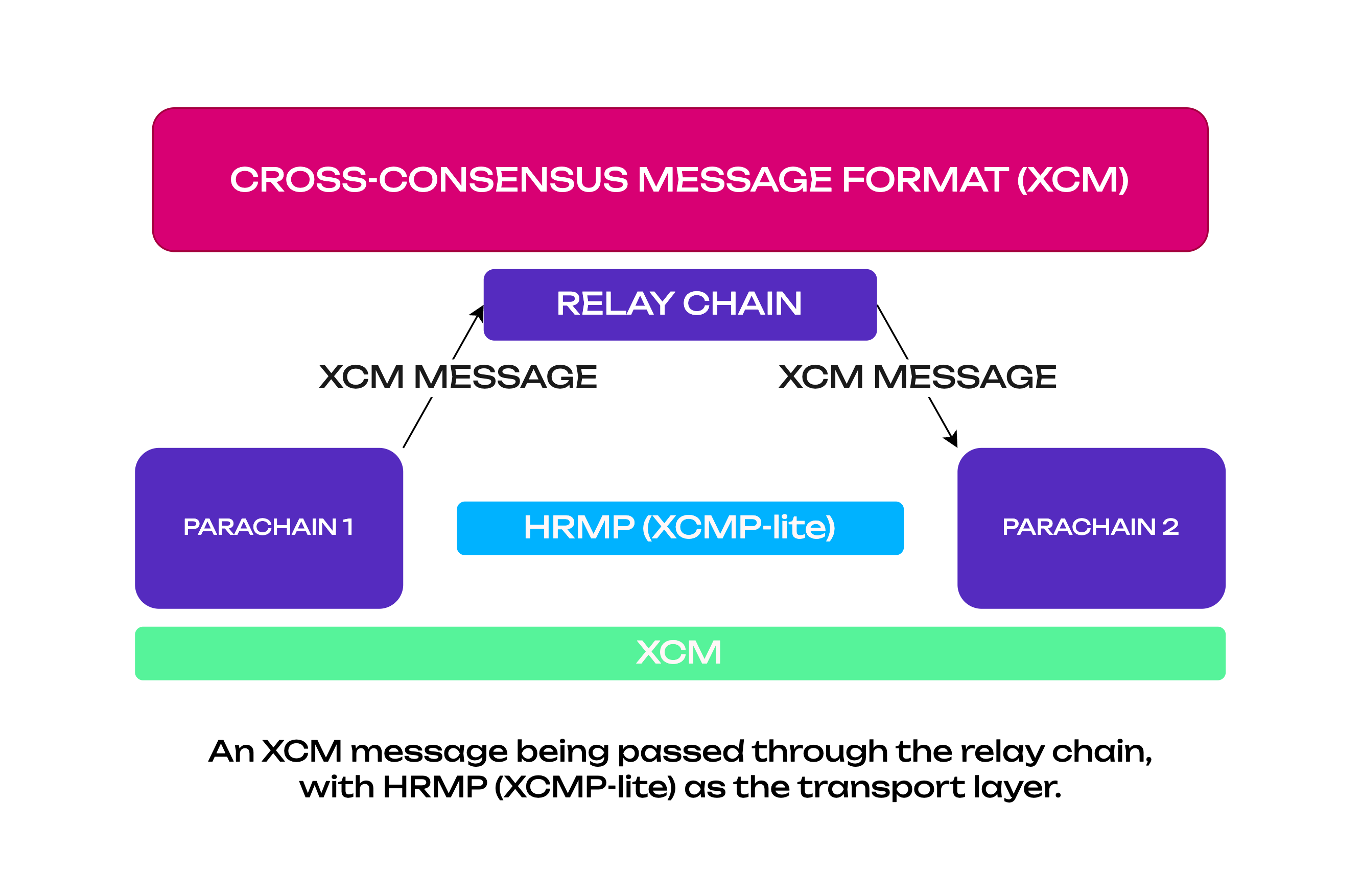Cross-consensus message format, or XCM, is a messaging format and language used to communicate between consensus systems.
XCM is designed to provide a generalized and extensible set of instructions that can facilitate the completion of transactions across different consensus systems, transaction formats, and transport protocols.
A Closer Look At XCM
One of Polkadot’s primary functionalities is interoperability between its different parachains and other consensus-driven systems. XCM is essentially the language that allows two blockchains to interact with one another and conduct complex cross-chain interactions. However, XCM is not specific to the Polkadot network. The primary function of XCM is to define a generic format that allows different consensus systems to communicate with one another. XCM also does not define how messages between two consensus systems are delivered. Instead, it defines how the message should look and act and contains instructions for the intended on-chain actions.
XCM messages are delivered to participating parachains via the XCMP (Cross Chain Message Passing), and has four core design principles that it adheres to.
-
Asynchronous - XCM messages do not assume that the sender would be blocking on its competition.
-
Absolute - XCM guarantees that messages are delivered and interpreted accurately. When a message is sent, the sender can be sure it will be delivered and processed as the sender intended it to be.
-
Asymmetric - XCM messages follow the ‘fire and forget’ paradigm. This means there is no way for the sender to know whether the message was received. Results must be communicated separately with the sender, along with an additional message back to the origin.
-
Agnostic - XCM does not make any assumptions regarding the nature of consensus systems. It can be used in any system that reaches finality via consensus.
How XCM Is A Significant Leap For Cross-Chain Technology?
XCM offers several improvements over previous and existing bridging solutions. Previous cross-chain technologies generally involved moving tokens between chains. XCM messages can carry any data, enabling far more than token transfers and facilitating innovative services not supported by legacy networks. XCM messages are also programmable, allowing a high level of cross-chain interoperability that was previously not seen in blockchain technology.
XCM is also highly secure and trustless. Before the advent of XCM, blockchains had no way of communicating other than using bridges that relied on third parties, leading to an array of infamous hacks. Messages between parachains on Polkadot share the same security as the rest of the network. They also do not require funds to be deposited with third-party custodians or any centralized entity. XCM also works between smart contracts based on different virtual machines, connecting networks built on different consensus mechanisms.
One of the main goals of XCM is to improve communication between chains and make system parachains a reality. Let’s take the example of Polkadot’s Relay Chain. Besides parachain management and shared security, the Relay Chain handles user balances, assets, governance, auction, and staking. In an ideal situation, the Relay Chain should only be utilized for shared security. System parachains can help alleviate core responsibilities from the Relay Chain by using a standard format like XCM.\
A Format For Cross-Consensus Communication
XCM started as an approach to cross-chain communication. However, it has now evolved into a format for cross-consensus communication that can be conducted between chains, smart contracts, pallets, bridges, and sharded enclaves such as SPREE. As mentioned earlier, XCM is a format for how a message transfer must be performed. This is similar to how RESTful services use REST as an architectural development style, with HTTP requests containing specific parameters to perform specific actions.
Disclaimer: This article is provided for informational purposes only. It is not offered or intended to be used as legal, tax, investment, financial, or other advice.





